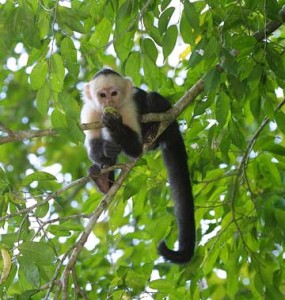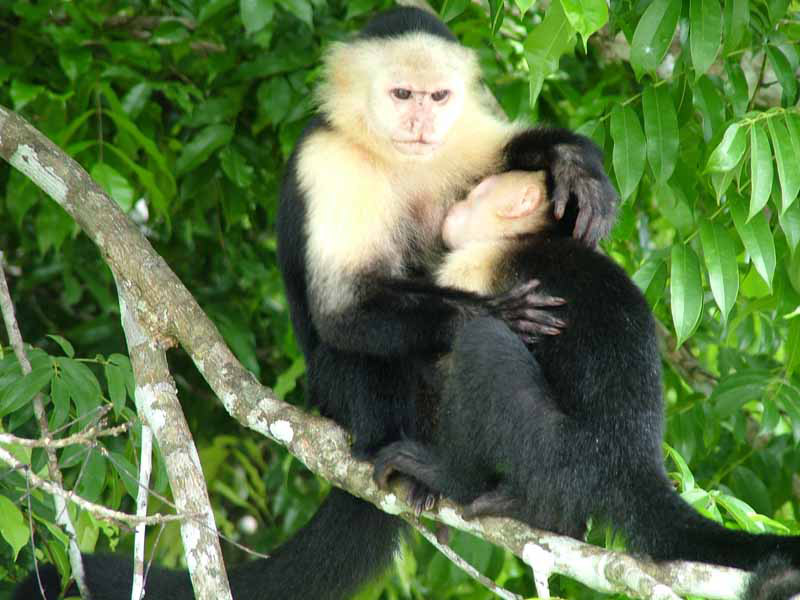The most recent count of white-faced monkeys in the Area de Conservación Guanacaste (ACG), indicates that populations continue to recover, as their habitat, located in the dry forest.This is preliminary data from a survey conducted by Linda Fedigan and Katherine Jack, University of Calgary, Canada.
 This reveals that the number of white-faced monkeys (Cebus capucinus ) increased from 716 to 745 subjects, grouped in 46 herds, showing a rise of 4% in the population.
This reveals that the number of white-faced monkeys (Cebus capucinus ) increased from 716 to 745 subjects, grouped in 46 herds, showing a rise of 4% in the population.
“In previous years, the white face have experienced more significant increases of up to 11.5%, but it was too early to know if the population growth is slowing,” said Jack.
For its part, the howler monkeys have experienced a significant decrease in its population since 2007. This research details 446 individuals living in 50 groups, 27% less than those recorded four years ago. Monkeys can be seen on many short day trips from San Jose, Costa Rica.
Experts point out that although the number of howler monkeys appears to have declined significantly since 2007, it is important to note that these primates have experienced tremendous growth since the establishment of the protected area of Santa Rosa.
The first data recorded in 1972, estimated its population in just 85 individuals clustered in 10 herds. A decade later, the population grew to 274 individuals and 446 are counted today howler monkeys in 50 groups.
“It is normal for the species populations vary over time due to ecological and social factors, would require further investigation to determine the scientific reasons why this has happened and if it is a temporary or permanent trend,” explained the researchers.
Although this census is conducted every four years, consider making a new one in 2013 to monitor the fluctuation of the population.
Increased populations of monkeys is an indicator that the dry forest recovers, as these animals occupy large tracts of land to develop.
To Roger White, deputy director of ACG, this means that more and more tall trees and denser forest, beneficial conditions for the reproduction and development of monkeys. “Monkeys are very important as seed dispersers, they eat them and then divided into different areas in their feces, thus helping to repopulate different species of trees,” said White.

